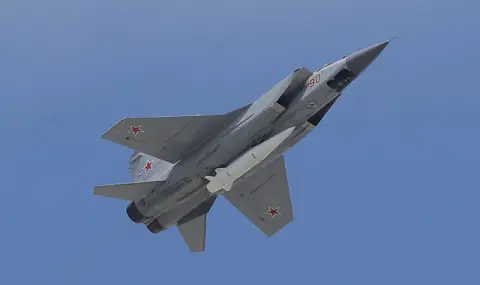Hypersonic weapons have become in one of the most important innovations in the military sphere in 2020, opening new opportunities to achieve superiority in modern conflicts. Their special feature is the ability to combine the speed of ballistic missiles with the maneuverability of cruise missiles, which makes it possible to effectively avoid air defense systems, writes Forbes.
Russia and China are leaders in the development of hypersonic technologies, which has stimulated other countries to launch their own programs and means to counter them.
Russia actively uses its hypersonic missiles, especially "Dagger", in the war in Ukraine, striking important targets with them. On March 18, 2022, "Dagger” was used to attack an underground weapons depot in western Ukraine. Despite their significant characteristics, they have not been a decisive factor in combat operations due to their limited number and the ability of Ukrainian forces to intercept some of them with advanced air defense systems such as the American Patriot. In May 2023, Ukraine reported that it had intercepted a "Dagger" missile for the first time, a significant event in the war.
"Dagger“ is the aviation version of the "Iskander" missile, which is designed for ground launch. "The Daggers“ they can reach speeds of up to Mach 10 and are usually launched from MiG-31K or Tu-22M3 aircraft. Another type of hypersonic weapon that Russia has is the "Avangard". It is a hypersonic guided missile capable of carrying nuclear warheads at extremely high speeds, but has not yet been used in combat.
Despite the effectiveness of "Dagger“ in overcoming air defense systems, its production is hampered by a number of factors. First, the production of hypersonic missiles requires advanced materials capable of withstanding the intense heat and high pressure of flight. Second, the missiles are equipped with high-precision guidance systems and sophisticated electronic components. Restrictions on Russia's access to advanced technology due to international sanctions imposed by Western countries and high production costs prevent the mass production of these weapons.
Furthermore, the Russian defense industry must balance the need to produce artillery, drones and armored vehicles that are needed for the war in Ukraine.
Despite the limited impact of hypersonic missiles on the current conflict, they remain a promising technology for future warfare. Their efficiency can be greatly increased by increasing their stocks and further upgrading them. The next generation of these weapons will likely be more maneuverable and more accurate, challenging even current air defense systems.
The technological race to develop hypersonic weapons and their interceptors could significantly affect the balance of power in the world. The use of artificial intelligence and advanced data processing techniques will accelerate this process, creating conditions for a global reconfiguration of defense strategies. Thus, hypersonic missiles are already shaping the future of warfare, although their impact on modern conflicts is still limited by manufacturing and technical challenges.
